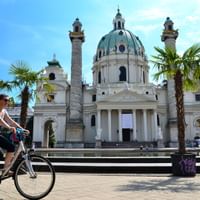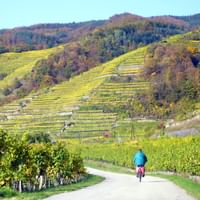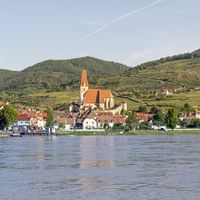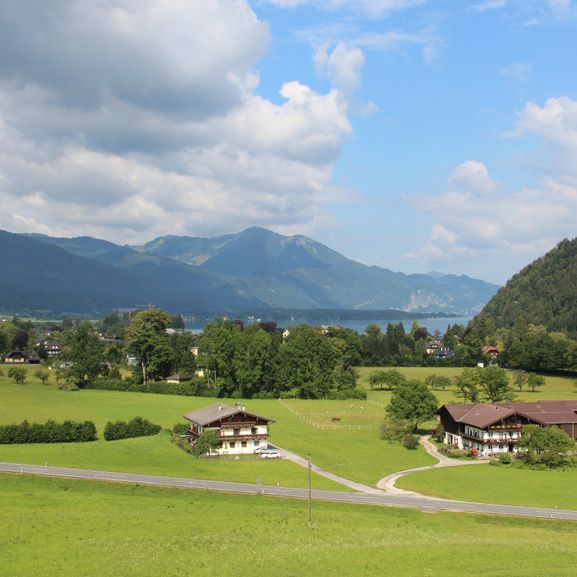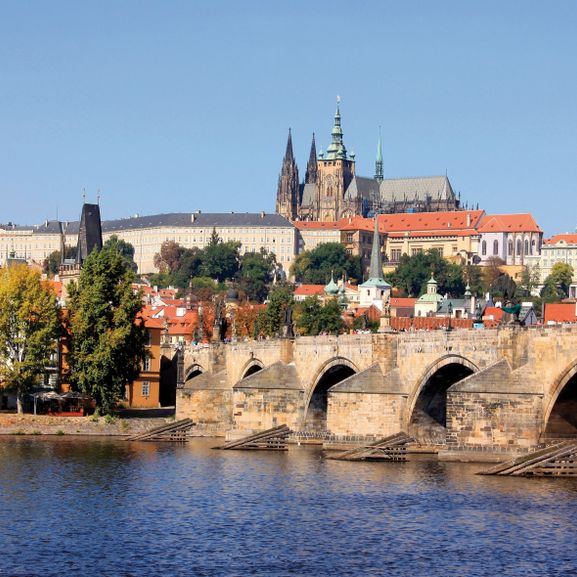The charm of the old Danube monarchy: on the Danube Cycle Path from Austria to Hungary
Biking tours in Hungary
The Danube Cycle Route is one of the most beautiful cycle routes in Europe. Enchanting river landscapes, unique natural spectacles, imposing sights, lots of culture and legendary history are there to be discovered. On the way to the Hungarian capital Budapest, you will explore the charming Danube metropolises of Vienna and Bratislava. In Hungary, the idyllic region at the bend of the Danube along the towns of Esztergom, Visegrad and the artist town of Szentendre is one of the most beautiful sections of the Danube Cycle Route. Look forward to Budapest. The city's most famous buildings are almost all located on the banks of the Danube, including the Parliament, inaugurated in 1904 and one of the largest buildings in the world.
Cycling on the Danube in Hungary
In Hungary, you cycle along the Danube on almost always asphalted cycle paths and sometimes on low-traffic side roads and economic roads. The Hungarian section is one of the most beautiful along the Danube Cycle Route 6 and Hungary is investing a lot in its development. The already completed sections are marked in green, where yellow signs are attached, the route is still under construction.

The splendour and splendour of the former Danube monarchy
In many Hungarian towns, the traces of the once glorious Danube monarchy cannot be overlooked. On the Hungarian Danube bend you will find the idyllic and interesting places of Esztergom, Visegrad and the artists' town of Szentendre. In Esztergom, the centre of the Catholic Church in Hungary, the cathedral overlooks the roofs of the city. Visegrad has a fabled citadel and a pretty city centre to offer. In Szentendre, Romans and Turks left their mark. An interesting mix of cultural influences awaits you, colourfully painted houses in the baroque cityscape of the narrow streets and a colony of artists. The Hungarian highlight is of course Budapest! Fittingly, almost all of the city's most beautiful and famous buildings are located on the banks of the Danube: for example, the Parliament, inaugurated in 1904, is one of the largest buildings in the world. Nine bridges connect the hilly district of Buda with the rather shallow Pest. You will discover splendour and splendour everywhere in the second largest city on the Danube.

Art and Culture
In Budapest, visit the Operetta Theatre, the National Opera, the Liszt Academy of Music or the MÜPA Palace of Arts, one of the most modern cultural institutions in the country with performances in a wide variety of fields: classical and contemporary music, folk and world music, jazz and opera, dance and ballet. - In Szentendre, friends of the fine arts will find something. There was once a colony of artists that has influenced the city to this day: galleries and museums are scattered throughout the town, where exhibitions take place, such as the Expressionist works of Béla Czóbel in the Czóbel Museum or the collection of ceramics artist Margit Kovacs in a Baroque house dating from 1750. - The Balassa Balint Museum on Mindszenty Square in Esztergom shows, among other things, an art collection.

Goulash and Gulyás
Langos, flakes made from yeast dough, are probably already familiar to everyone from the local areas, as is the famous Hungarian goulash (called Pörkölt or paprikás), which is prepared with sour cream and chicken meat. "Gulyás" refers to the actual Hungarian goulash soup, which consists of beef, paprika and onions, but is cooked in many different forms. Everyone has their own secret recipe. There's fish soup all over the country. It is preferably prepared with zander or carp and this in a variety of ways. Debrecziner is a sausage speciality that is eaten with mustard or horseradish and white bread. For dessert or coffee, perhaps treat yourself to an Esterházy cake with five layers of biscuits, buttercream and fondant icing.
Be sure to drink a Tokajer, the wine of Hungary par excellence, or try a Barackpálinka, a fruit brandy distilled from apricots.

Of waves and eddies
The broad stream of the Danube runs through Hungary like a silver ribbon. One of its highlights is the Danube Knee in Hungary, where the river flows in an almost right-angled curve and the flow direction changes from east to south on its way through the mountains of the Visegrad Mountains and towards the Black Sea. It is also home to the Danube-Ipoly National Park, which aims to preserve the unique habitats. The partly unspoilt bank of the Danube offers a unique habitat for numerous animal and plant species: the Hungarian rhinoceros, lurches and salamanders, water snails, imperial eagles, owls and black storks live here. - Another highlight is Szigetköz, the Small Drain Island, a region that is bordered to the north by the Danube (Hungarian: Duna) and the Small Danube (Mosoni Duna), thus forming a large river island. On it you will find endless fields of sunflowers.


